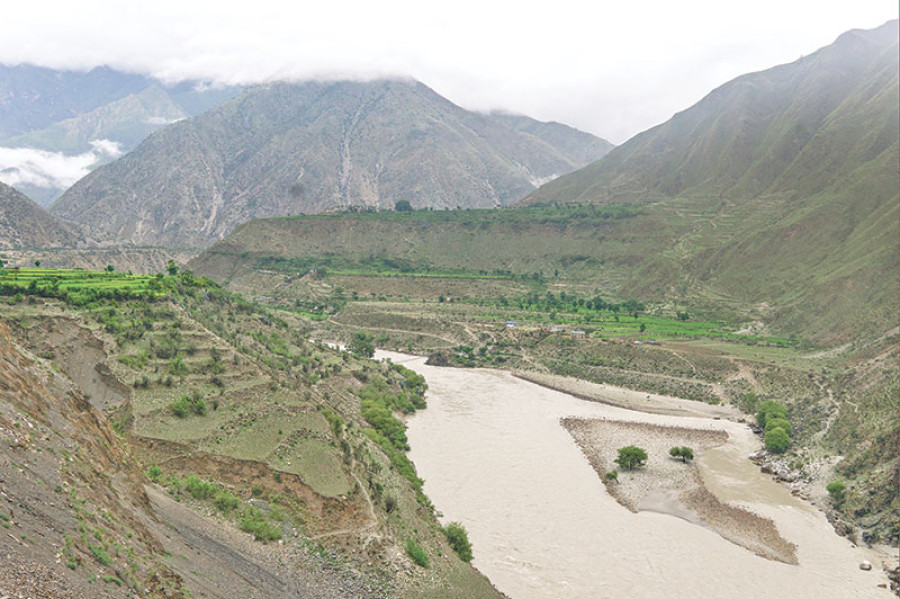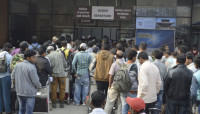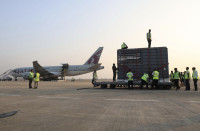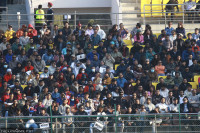Opinion
The empire springs back
A resurgence in Nepal’s west can give a considerable boost to the regional and national economies.
Jaya Jung Mahat
Since the term Asian Century emerged in the 1980s and the Asian Development Bank published a key document entitled Asia 2050: Realising the Asian Century in 2011, many scholars and institutions have written on this agenda—most notably Kishore Mahbubani, Parag Khanna, the World Bank and the International Monetary Fund—arguing why the rise of Asia would not only lift billions of people out of poverty in the region but also give a significant boost to the world economy. Key global institutions and world leaders continue debating the pros and cons of the revival of Asian economies. As for us, the rejuvenation of the western part of the country is desirable for better social, economic and political outcomes in the future.
Though limited literature exists on a detailed history of Nepal’s western part, some works of Mahesh Chandra Regmi, Dilli Raman Regmi, Surya Mani Adhikary, and Inga-Britt Krause provide a brief outline of the medieval Khasa kingdom and the major aspects of this regime. The Khasa kingdom, or Khasadesa, controlled much of modern Nepal’s western part between the 11th and 14th centuries, thus dominating the politics and societies of early medieval Nepal. Khasadesa also comprised of considerable parts of Kumaon and Garhwal of modern India and also some parts of southwestern Tibet, thus making it one of the most influential and prosperous empires on the Indian subcontinent.
At the empire’s peak, the Karnali River corridor acted as an efficient trans-Himalayan trade route and also a pilgrimage path for Hindu and Buddhist travellers by connecting major Indian cities with western Tibet through modern Nepal’s west Tarai, Dullu in Dailekh and the Sinjha Valley in Jumla. Furthermore, a separate summer trade route connected the Kumaon region with Tibet through Doti. In terms of social aspects, it is frequently stated that the Khasa kingdom also witnessed rapid assimilation of races, religions, cultures and languages that has never occurred before, or since. The kingdom also placed high priority on its art and architecture. The kingdom had religious harmony, as the rulers then mainly followed Buddhism, but always had great respect and tolerance for citizens following Hinduism. Moreover, the kingdom’s Khasa language has evolved over the centuries and its Sinjali version has taken centre stage in modern Nepal in the form of one of the widely spoken national languages.
Economically, the Khasa kingdom relied heavily on revenues generated from chhattiskar, 36 types of taxes, imposed on diverse areas of agriculture, land tenure systems, animal husbandry works, trade and industries. The land tenure system then was much developed as compared to other parts of modern Nepal and was categorised into Serã, Raikar, Guth, Birtã, and Jãgr. The kingdom’s Sinjha Valley also acted as a busy trade port between southern Indian cities and northern Tibetan and Chinese towns. The kingdom’s traders exported wool, woollen cloth, herbs, horses of noble breeding, falcons and musk of the deer to India while importing silk, spices and salt from the southern neighbour. On the northern side, major exports to Tibet included food grain, cotton cloth, pepper and chilli and major imports from the northern side comprised of wool, woollen cloth, salt, sheep, horses, gold and silver. In a nutshell, the Khasa kingdom in early medieval Nepal was one of the most prominent economies on the Indian subcontinent.
The kingdom with such a glorious past began to decline after it was divided into Baise and Chaubise Rajyas after the late 13th century and continued to suffer even after the Gorkha kingdom annexed these 46 principalities. As a result, Nepal’s western region—especially the mid- and far west—remains one of the most underdeveloped regions today. As per a 2018 study conducted by the National Planning Commission, 50 percent of the people of Karnali Province (home to the medieval Khasa kingdom’s capital) were living in multidimensional poverty, the highest rate among the seven provinces in Nepal, against the national average of 28.6 percent.
Similarly, other parts of the kingdom, Provinces 5 and 7 in modern-day Nepal, have approximately 30 percent of the population living in poverty, with all these regions suffering from malnutrition and inadequate years of schooling. Moreover, according to the 2017-18 Economic Survey, western Nepal lags far behind the rest of the country in major social and economic terms. For example, Karnali Province and Province 5 have the lowest number of schools and lower literacy rates. Karnali and Provinces 5 and 7 have less access to road facilities, fewer industries and banks and financial institutions, and fewer primary health centres and health posts. On top of this, the Karnali Province faces acute food shortages.
Nepal’s mid- and far west regions have one of the lowest population densities, but the population growth rate in these regions between 1991 and 2011 was considerable. The population has grown by a larger percentage than in other regions except for the central region. Amid the glorious past and the current realities, a resurgence in Nepal’s west—especially Karnali and Provinces 5 and 7—will not only develop these regions but also give a considerable boost to the regional and national economies. Also, the incorporation of some of the values of the medieval Khasa kingdom (religious harmony and high regard for the arts, languages and cultures) and strategies (better connectivity between Nepal, China and India) will help modern Nepal realise its long-lasting balanced growth agenda.
Jaya is a policy economist. He tweets at @jjmahat830.




 15.12°C Kathmandu
15.12°C Kathmandu









%20(1).jpg&w=300&height=200)

